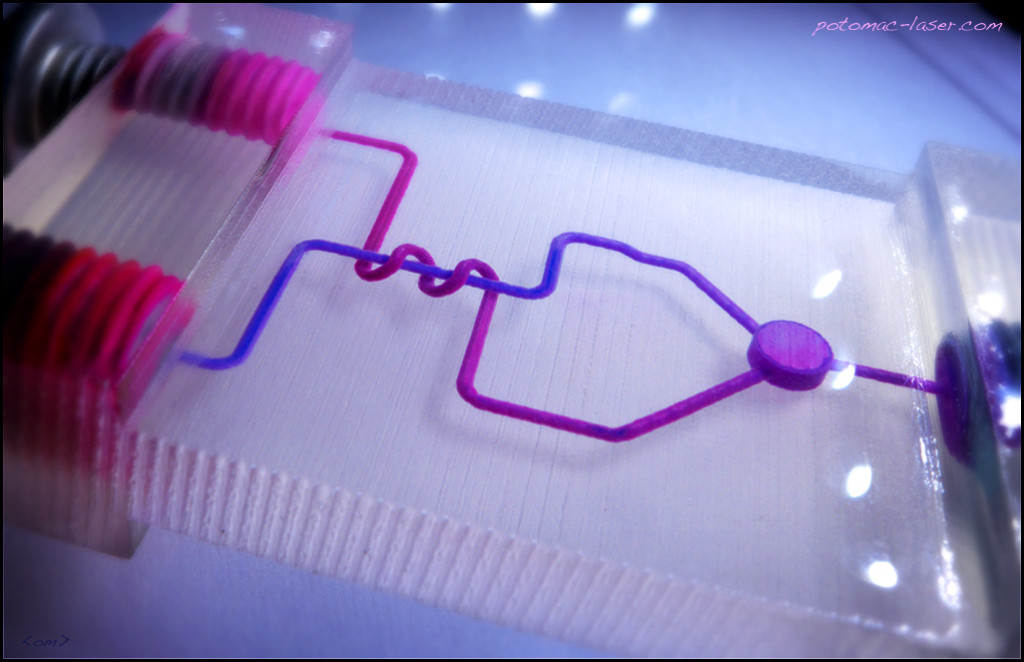Microfluidics
|
Most microfluidic chip prototypes are constructed using photolithographic processes with PDMS, glass, or silicone, micromilling or hot embossing of plastics, and thermal, solvent, or adhesive bonding to form closed fluidic features. High-resolution 3D printing offers an attractive alternative in applications where the printed materials are compatible with the fluids processed.
Many microfluidic systems require integration of heating elements, temperature monitors, flow sensors, electrodes, light sources, detectors, and other items into areas near the flow stream. 3D printing simplifies this integration and can reduce cost and design turnaround time. |
